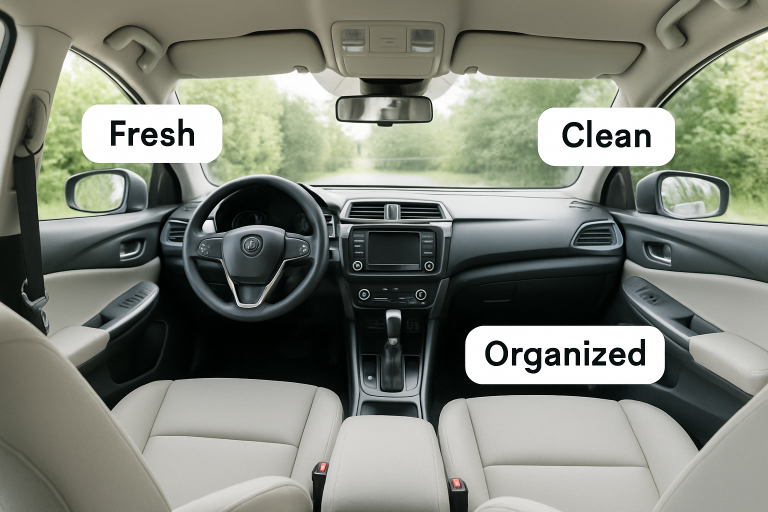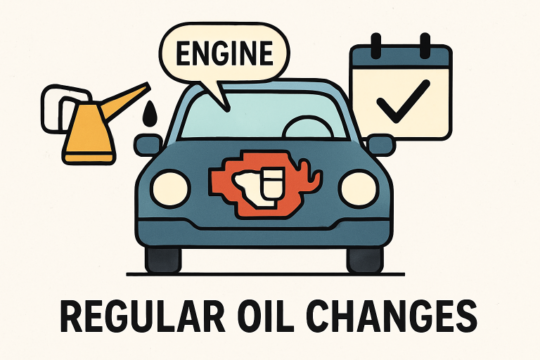Maintaining a clean, fresh car interior goes beyond keeping up appearances—it’s essential for your well-being and comfort, especially if you spend a lot of time on the road. A spotless, organized cabin not only helps reduce allergens and bacteria but also improves your daily driving experience. Whether you’re tackling a spring clean or adopting new habits, these auto detailing strategies will set you on the right path to a healthier and more inviting vehicle environment.
Pristine interiors benefit both drivers and passengers by reducing fatigue and creating a calmer mood during trips. Regular care maintains your car’s resale value, as neglect can cause wear, smells, and health risks from mold or dust. Using expert tips and proper tools can extend interior lifespan. Investing in cleanliness is about safeguarding comfort and key surfaces, ensuring your vehicle stays pleasant and avoiding costly repairs.
Table of Contents
Vacuuming Thoroughly
Start the detailing process with meticulous vacuuming. Remove the floor mats and vacuum them separately. Then, move on to the seats, carpet, and every hidden nook—including under seats and between cushions—with the right attachments. Crevice tools help dislodge grit and debris from hard-to-reach areas. Weekly vacuuming prevents abrasive dirt from embedding into the upholstery, which can cause long-term deterioration and harbor pollutants that contribute to cabin odor and allergies. Vacuuming is a top line of defense for preserving interior surfaces and boosting air quality in your car.

Cleaning and Conditioning Surfaces
Each vehicle interior surface needs a specific cleaning method. Leather seats require a dedicated cleaner and conditioner to preserve their texture. Fabric upholstery benefits from a gentle cleaner and soft brush for stains and odors. Hard surfaces like dashboards and door panels should be cleaned with a microfiber cloth and non-abrasive cleaner to prevent damage. Avoid harsh chemicals and rough sponges, which can cause brittleness or discoloration of plastics and vinyls. Incorporating regular car detailing into your maintenance routine not only enhances the vehicle’s appearance but also improves its resistance to UV and physical damage. Additional tips include testing cleaners on an inconspicuous area first, following the instructions on the product labels, and using dry microfiber cloths for a streak-free finish.
Cleaning Air Vents
Air vents are notorious for collecting dust and allergens, which can be recirculated throughout your cabin with every use of the A/C or heater. A detailing brush or compressed air tool easily loosens and expels stubborn dust from vent slats. Completing this routinely—not just during visible buildup—ensures fresher air for everyone and can reduce the spread of respiratory irritants. For individuals with allergies, this step is crucial for maintaining a healthy vehicle atmosphere, especially in pollen-heavy seasons.
Detailing Windows and Mirrors
Crystal-clear windows and mirrors are vital for safe driving, particularly in poor weather or at night. Use a reputable glass cleaner and a lint-free microfiber cloth, working vertically and horizontally to eliminate streaks and ensure a polished shine. Always remember to roll down the windows partially to clean their upper edges—an often-overlooked spot where grime accumulates. This careful attention not only enhances visibility but also prevents permanent hazing, helping avoid avoidable wear and costly replacements.
Eliminating Odors
To maintain a comfortable vehicle environment, it is essential to address odors directly, as they can indicate hygiene problems. Instead of masking smells with air fresheners, focus on managing the sources: regularly empty trash, vacuum debris, and promptly clean spills to avoid staining and mildew growth. For persistent odors, automotive odor neutralizers can deeply clean fabrics and air systems. Daily decluttering after family outings or grocery runs is essential. Promptly blot and rinse spills, especially organic ones, using enzymatic cleaners, and ventilate the vehicle’s interior by opening windows or doors on sunny days to freshen the air.
Establishing a Regular Maintenance Routine
Frequency and consistency are key for long-term vehicle interior care. A routine includes weekly tasks like removing clutter, wiping touchpoints, and vacuuming, with monthly deep cleaning of carpets, laundering seat covers, treating leather, and checking for stains. Seasonal maintenance involves applying UV protectants and conditioning sprays to protect against weather effects. Following this routine preserves the vehicle, ensuring a safe, healthy, and comfortable environment. Using professional services and proven detailing tips further enhances the interior for better comfort and peace of mind.
Final Thoughts
Maintaining a clean, well-cared-for car interior enhances comfort, safety, and value. Regular vacuuming, surface care, clean air vents, spotless glass, and odor control preserve both look and function. Routine detailing prevents dust, debris, and damage buildup, making drives more enjoyable and healthier. Whether DIY or professional, these efforts protect your investment and keep your car fresh and inviting for years.




